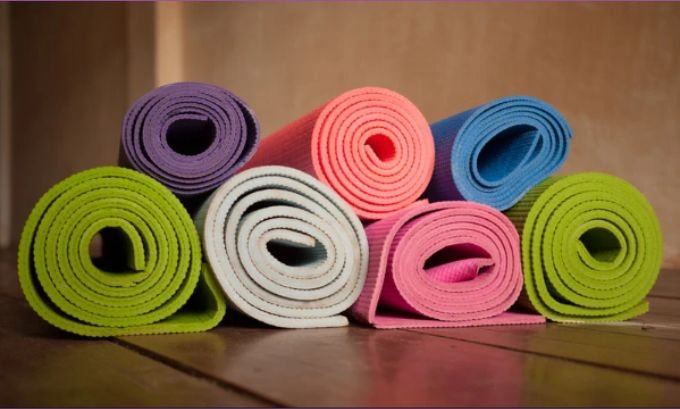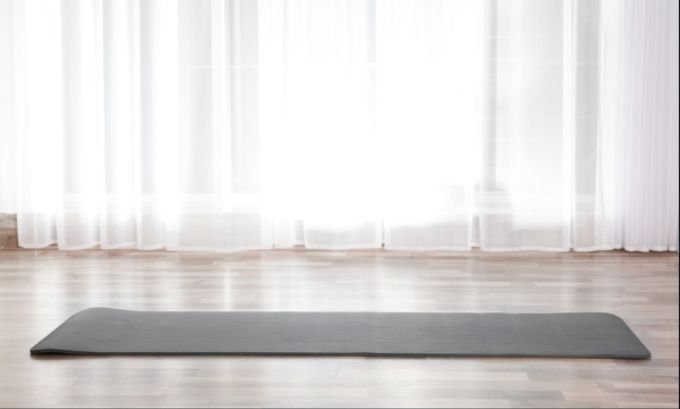Stepping onto the right yoga mat can transform your entire practice. Whether you’re flowing through sun salutations or holding challenging poses, your mat serves as the foundation for every movement, breath, and moment of mindfulness.
With hundreds of options flooding the market, finding the perfect yoga mat might feel overwhelming. From thickness and material to grip and price, numerous factors influence which mat will best support your practice. This guide breaks down everything you need to know to make an informed decision that aligns with your yoga style, budget, and personal preferences.
The right mat doesn’t just provide comfort—it enhances stability, prevents injuries, and creates a dedicated space for your practice. Let’s explore how to find the mat that will support your yoga journey for years to come.
Table of Contents
Understanding Yoga Mat Materials
The material of your yoga mat determines its durability, grip, comfort, and environmental impact. Each material offers distinct advantages and considerations.
PVC Mats: The Traditional Choice
PVC (polyvinyl chloride) mats remain the most common option for good reason. They provide excellent grip, especially as they break in with use, and offer superior durability. These mats typically last for years of regular practice and maintain their stickiness even through sweaty sessions.
However, PVC isn’t biodegradable and may contain phthalates, making it less environmentally friendly than other options. If you prioritize performance and longevity over environmental concerns, PVC might be your best bet.
Natural Rubber: Eco-Friendly Performance
Natural rubber mats deliver exceptional grip and cushioning while being more environmentally conscious. They provide excellent traction for dynamic practices and hot yoga sessions. Many practitioners love the natural feel and earth-friendly production process.
The downside? Natural rubber can have a strong smell initially and may cause allergic reactions for those with latex sensitivities. These mats also tend to be heavier than other materials.
Cork Mats: Antimicrobial and Sustainable
Cork offers unique antimicrobial properties that resist bacteria and odors naturally. These mats provide good grip that actually improves with moisture, making them ideal for hot yoga. Cork is also sustainably harvested and biodegradable.
Cork mats can feel firmer than other materials and may require a break-in period to achieve optimal grip. They’re also typically more expensive than synthetic alternatives.

TPE Mats: The Compromise Option
TPE (thermoplastic elastomer) mats bridge the gap between performance and environmental responsibility. They’re recyclable, lighter than rubber, and offer decent grip and cushioning. TPE mats work well for general practice and are often budget-friendly.
The trade-off comes in durability—TPE mats typically don’t last as long as PVC or natural rubber options.
Yoga Mat Thickness Guide
Thickness significantly impacts your comfort and stability during practice. The right thickness depends on your body type, practice style, and personal preferences.
Standard Thickness (4-5mm)
Most yoga mats fall into this range, offering a balanced combination of cushioning and stability. Standard thickness works well for most practitioners and practice styles, providing adequate joint protection without compromising balance in standing poses.
Thin Mats (1-3mm)
Travel mats and ultra-portable options typically measure 1-3mm thick. While they’re incredibly convenient for on-the-go practice, they offer minimal cushioning. These work best for experienced practitioners who prioritize portability over comfort.
Thick Mats (6-8mm)
Extra-thick mats provide maximum cushioning for sensitive knees, joints, and pressure points. They’re excellent for restorative practices, yin yoga, and practitioners who spend significant time in seated or prone positions.
The downside of thick mats is reduced stability in balance poses. The extra cushioning can make standing poses and arm balances more challenging.
Yoga Mat Comparison Table
| Feature | PVC | Natural Rubber | Cork | TPE |
|---|---|---|---|---|
| Grip | Excellent | Excellent | Good | Good |
| Durability | Very High | High | High | Moderate |
| Eco-Friendliness | Low | High | Very High | Moderate |
| Price Range | $20-80 | $40-120 | $60-150 | $25-70 |
| Weight | Light-Medium | Heavy | Medium | Light |
| Cushioning | Good | Excellent | Moderate | Good |
| Maintenance | Easy | Moderate | Easy | Easy |
Choosing Based on Your Practice Style
Different yoga styles place varying demands on your mat. Understanding these requirements helps narrow your options significantly.
Hot Yoga and Bikram
Hot yoga requires superior grip and moisture-wicking properties. Natural rubber and cork mats excel in these conditions, as their grip actually improves with moisture. Look for mats specifically designed for hot yoga with enhanced absorption capabilities.
Vinyasa and Power Yoga
Dynamic practices with frequent transitions benefit from mats with excellent grip and moderate cushioning. PVC and natural rubber mats provide the stability needed for quick movements and challenging poses.
Yin and Restorative Yoga
Gentle practices that involve long-held poses prioritize comfort over performance. Thicker mats (6-8mm) provide essential cushioning for extended floor time, while material becomes less critical than thickness and softness.
Ashtanga Yoga
The demanding nature of Ashtanga requires a mat that can handle intense practice while providing reliable grip. Traditional PVC mats or high-quality natural rubber options work best for this vigorous style.

Size and Portability Considerations
Standard yoga mats measure approximately 68-72 inches long and 24-26 inches wide. Taller practitioners should consider longer mats (78-84 inches) to ensure full-body coverage during practice.
Weight varies significantly by material and thickness. If you frequently travel with your mat or walk to classes, prioritize lighter materials like TPE or thin PVC options. For home practice, weight becomes less important than performance and comfort.
Maintenance and Longevity
Proper care extends your mat’s lifespan and maintains its performance. Most mats benefit from regular cleaning with gentle soap and water. Avoid harsh chemicals that can break down materials and compromise grip.
Allow your mat to air dry completely before rolling to prevent mold and mildew. Store your mat unrolled when possible to prevent permanent creases and maintain its flat surface.
Natural materials like rubber and cork may require special care products designed specifically for these materials. PVC and TPE mats are generally more low-maintenance but still benefit from regular cleaning.
Frequently Asked Questions
How often should I replace my yoga mat?
Most quality mats last 1-2 years with regular use. Signs it’s time for replacement include visible wear, loss of grip, persistent odors, or flaking material. Heavy practitioners may need to replace mats more frequently.
Can I practice yoga without a mat?
While possible, practicing without a mat increases injury risk and reduces stability. Even a thin travel mat provides better grip and hygiene than practicing on bare floors or carpets.
How do I clean my yoga mat properly?
Mix a few drops of gentle dish soap with water in a spray bottle. Spray the mat lightly, wipe with a clean cloth, and rinse with water. Allow to air dry completely before storing.
Are expensive yoga mats worth the investment?
Quality mats typically offer better durability, grip, and materials. While budget mats can work for beginners, serious practitioners often find that investing in a higher-quality mat improves their practice and provides better long-term value.
What’s the difference between yoga mats and exercise mats?
Yoga mats are typically thinner (3-6mm) with superior grip for poses and transitions. Exercise mats are often thicker (10-20mm) and designed for cushioning during floor exercises rather than stability during standing poses.

Finding Your Perfect Practice Partner
Choosing the right yoga mat involves balancing your practice needs, environmental values, and budget constraints. Consider your primary practice style, frequency of use, and any physical considerations like joint sensitivity or height requirements.
Start by identifying your non-negotiables—whether that’s eco-friendliness, grip performance, or portability. Then evaluate options within your budget that meet these criteria. Remember that a quality mat is an investment in your practice that can serve you well for years.
Many yoga studios and retailers offer mat testing opportunities. Take advantage of these when possible to get a feel for different materials and thicknesses before committing to a purchase.
Your perfect yoga mat is out there waiting to support your practice, provide stability for your poses, and create a sacred space wherever you choose to flow.
Ready to upgrade your practice with the best yoga mats? Discover a curated selection of wellness and fitness essentials at Tokyo Mart—your trusted source for yoga gear and more.


